Namibia from north to south – 17 days – Self-drive recommended tour

NB:Guided tour: Due to the high cost of the guide, we recommend that you request it for groups starting from a minimum of 4 people.
** The cost presented is only an indicative quotation in South African Rand. Fill in the form Tour information request with your requests we will send you an offer without obligation
Click here for an indicative quotation.
| ARRIVO/PARTENZA | Windhoek – aeroporto Hosea Kutako | ||||||||
| IN SELF-DRIVE IL PRODOTTO INCLUDE |
|
||||||||
| CON GUIDA IL PRODOTTO INCLUDE |
|
||||||||
| NON INCLUDE |
|
||||||||
| LEGENDA |
|
For information and general conditions for access to countries and travel, see the page General Information
1
Windhoek
Reception at the airport with delivery of travel documents and, for self-drive customers, the vouchers of the lodges and the collection of the car. Based on the arrival time, you will choose accommodation in the city and in BB, or accommodation located north of the capital, in DBB, immersed in the wild, with the possibility of safari for an exciting first contact with nature and African animals.
2
At The Gates Of The Kalahari Desert
We leave for Mariental, a town located in the central area of Namibia on the edge of the Kalahari Desert, which occupies the entire surface of the neighboring Botswana and laps a vast area of eastern Namibia. With its fascinating expanses of red sand, the Kalahari (the always dry in the San language) is actually the least deserted desert in the world and welcomes an incredible variety of plant and animal species including the oryx, antelope superbly adapted to the environments. and the small meerkats. The lodgings in the area organize safaris in their private reserve, with a guide and a 4×4 vehicle. Accommodation in DBB. Distance about km 250.
3
Fish River Canyon
We leave again continuing south to reach the second largest canyon in the world. On the way to Keetmanshop it is possible to visit the Quiver Tree Forest, (Kokerboom in Afrikaans) formed by plants of “Aloe dichotoma” also called quiver tree, so called thanks to the bushmen who used their hollow branches as quivers for their arrows. In the afternoon I arrive in the Fish River Canyon area, which was initially formed by an earthquake, and then in 650 million years by the slow and constant erosion of the waters. Accommodation in DBB. Distance: about 320 km.
4
Fish River Canyon/Luderitz
Visit of the canyon, from the largest and most spectacular observation point called “Hobas” The excursion allows you to photograph this spectacle of nature from above in the most significant points. Back on the road, towards the Atlantic coast and the small town of Luderitz, the first colonial settlement on the Atlantic coast. After Aus you can meet the famous herds of wild horses. It seems that the horses were left here during the First World War by the retreating German troops and that they managed to settle in this difficult desert climate. To see Kolmanskop, the mining ghost town, with the abandoned houses of the diamond diggers, now disappeared due to the advancement of the sand, the Diaz Point, which recalls the landing of the Portuguese navigator in 1487, and the beach of Agate Bay, formed by the residues of diamond processing. Accommodation in DBB. Distance: about 160 km.
5
Namib Desert/Tirasberg/Namib Rand
We leave for one of the most famous attractions of Namibia, what is considered the oldest desert in the world (80 million years): the Namib Desert. After Aus taking the D707 between the red sand background of the Namib Naukluft Park and the enchanted landscapes of the Tirasberg, one of the most beautiful mountain massifs in Namibia. Along the way, you can visit the small and fascinating “Duwisib Castle”, a small fortress from the time of the German guerrilla war against the locals and which tells the incredible love story between a German general and a rich American heiress. Accommodation in DBB. Distance: about 330 km.
6
Namib Desert/Naukluft Park/Sesriem
We cross one of the most beautiful areas of the Namib Desert, encountering spectacular scenery, arriving in Sesriem in the morning and at the entrance to the Sossusvlei Park. The Namib dunes extend to the south, from the Orange to the Kuiseb River, (in the area known as the dune sea or “sea of dunes”) and to the north, from Torra Bay in the Skeleton Coast park to the Kunene River in Angola. They are composed of colorful quartz sands and have shades ranging from cream to orange, red and purple. Unlike the ancient dunes of the Kalahari, those of the Namib are dynamic because they move and take on particular shapes due to the effect of the wind. Accommodation in DBB. Distance km 240.
7
Namib Desert/Sossusvlei Park
In the heart of the desert, discovering the highest and oldest sand dunes in the world, with explorations on foot of the famous Duna 45, of which you can reach the top, of the Dead Vlei (Dead Valley) among its ghostly ongoing acacias of fossilization, and of Sossusvlei, between arcane silences and unique landscapes, in constant change of shapes and colors. Visit of the Sesriem-Canyon: about 30 meters deep, it creates a humid environment rich in plants and animals in the heart of the desert. Accommodation in DBB. Optionally, possibility to admire this unique show in a hot air balloon or helicopter (advance booking is required).
8
Atlantic coast/Swakopmund
Departure for the Atlantic coast, destination Swakopmund. The route is very beautiful and varies continuously; you will meet uncontaminated savannah dotted with rare acacia plants, the “Tropic of Capricorn” and two spectacular mountain passes, the Gaub and the Kuiseb, up to Swakopmund, a picturesque town reminiscent of the German cities of old Europe. Here the hot desert meets the cold Atlantic currents of Benguela, giving rise to fogs, saline humidity and sudden changes in temperature that envelop the town in a sometimes surreal atmosphere. Afternoon: a choice between relaxation, a visit to the town and its Kristal Galerie, or a visit to the “Valley of the Moon” with its ancient specimens of the Welwitschia mirabilis plant, a true living fossil and an exclusive rarity in Namibia. Accommodation in BB. Distance about Km 310.
9
Emotions On The Ocean
Walvis Bay boat trip for close encounters with sea lions, dolphins, seabirds and sometimes even whales. At the Waterferont, transfer on a 4×4 that will take you across sand dunes and along the beach to Sandwich Harbor, another isolated lagoon, an unspoiled paradise of fauna where various species of birds find refreshment. Lunch included with sandwiches and very fresh oysters from the area. Overnight in the same hotel BB. Free dinner. Distance between Swakopmund and Walvis Bay about 30 km.
10
Erongo/Spitzkoppe
We go into the Erongo to visit the Spitzkoppe, a famous and fascinating granite formation. The area is characterized by hills with various shapes dominated by the Spitzkoppe also called the “Matterhorn of Africa” due to the singular resemblance to our beautiful mountain. In the afternoon visit to a nearby “Bushman” village where you will be shown some uses and customs of this ancestral ethnic group; recognition and collection of berries, roots and leaves, hunting techniques, tribal dances and songs. Accommodation in DBB. If preferred, it is possible to change the first part of the route, passing through a short stretch of the Skeleton Coast. Distance about km 230.
11
Damaraland
Another beautiful region of Namibia characterized by splendid mountainous landscapes, ephemeral almost perpetually dry rivers and small villages of the Damara ethnic group. In this area, unique in all of Africa, live the rare “river elephants” so called thanks to their peculiarity of digging with their front legs in the dry river beds until they find water. In the afternoon we will go on a 4×4 safari with an expert guide, in search of these pachyderms that have adapted to living in such a poor area of water. Accommodation in DBB. At night, for fans, observation of the incredible southern sky, with an expert equipped with a telescope. Distance about 290 km.
12
Kaokoland
Visit of the Twyfelfontein site, where you can admire the most spectacular rock art gallery in Namibia, one of the largest in the world: over 2000 petroglyphs engraved by the ancient San and since 2007 declared a “World Heritage Site” by UNESCO. Accompanied by an expert local guide, you will enter the heart of prehistoric art by discovering techniques and meanings of the diversified figures traced in the sandstone. Continue north, traveling through beautiful valleys and passing through the oasis of Palmwag, you enter the Kaokoland region, a land that is home to one of the most admired ethnic groups in Namibia: the Himba. Arrival in Opuwo (in the local language it means “the end”), the last small town in the north-west of Namibia. Accommodation in DBB. Distance about km 340.
13
Kaokoland/Epupa Falls
Further north, still experiencing a different Namibia, arriving at the Epupa Falls created by the Kunene River that marks the border with Angola. Thanks to the waters of the river, the landscape is greener, the area is surrounded by large baobabs and Makalani palms. Among the activities; admire the waterfalls from the top of the hill overlooking the falls, an unforgettable encounter with Himba and Demba, a proud ethnic group of shepherds who preserve intact the traditional lifestyle, centered on the beloved and indispensable livestock, from clothes to food to religious cults; legendary the beauty of women, unmistakable for the mixture of red ocher and animal fat that also covers the elaborate hairstyles. Accommodation in DBB. Distance about km 180.
14
Etosha Park
Departure for the Etosha park, considered one of the most beautiful and rich in animals in all of Africa, characterized by PAN, a dry salt lake, sacred place of the San ethnic group, which in their language means “the great white place”. The park is one of the largest and most animal-rich protected areas in Africa. After the entrance, the safari begins with your own car, wandering between a pool of water and the other where the animals go for watering, ensuring close-up and impressive photographs. Accommodation in one of the park’s resorts in BB, or in an off-park lodge in DBB. Distance about km 380.
15
Etosha Park
Full day dedicated to safari in Etosha, which ensures exciting close encounters with elephants, giraffes, zebras and antelopes of all species and their predators, such as lions, leopards, hyenas. Also of great interest is the vast range of environments, dominated by the vast depression of the Etosha Pan, and the avifauna, rich in colorful species including countless birds of prey. Accommodation in one of the park’s resorts in BB, or in an off-park lodge in DBB.
16
Central Region Waterberg Plateau Park
From Etosha to the park of the Waterberg Plateau the singular plateau rises isolated with mighty red sandstone bastions, between which a path climbs that leads to Mountain View, on the flat top of the plateau, among centuries-old wild figs and other peculiar rock plants. From the top of the Plateau, you have a view as far as the eye can see on a panorama without limits. Possibility of safari with guide and vehicle from the resort, with the possibility of sighting rare species such as the roan antelope, the black antelope, the two species of rhinos and, unusual in Namibia, buffaloes. Accommodation in BB. Alternatively, accommodation in DBB, in a lodge with private reserve, where in the afternoon you can have a last safari in 4×4 and expert guide. Distance: about 220 km.
17
Windhoek/Airport
Return to the capital Windhoek and compatibly with the departure time of the return flight, short visit of the city. If self-drive, release of the car at the rental agency and transfer to Hosea Kutako airport with the agency’s vehicle. Distance about km 230.









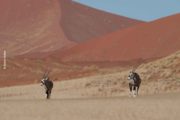


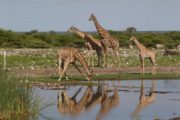



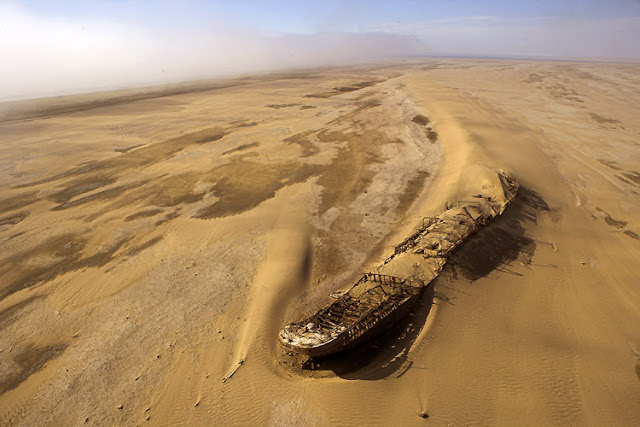





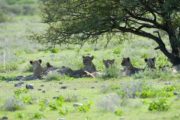




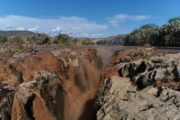













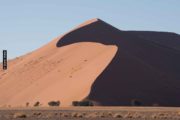






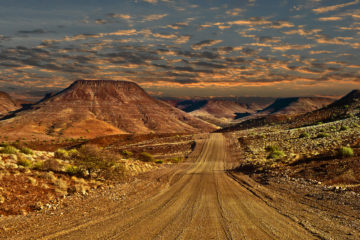
Recensioni tour
Non ci sono ancora recensioni
Lascia una recensione